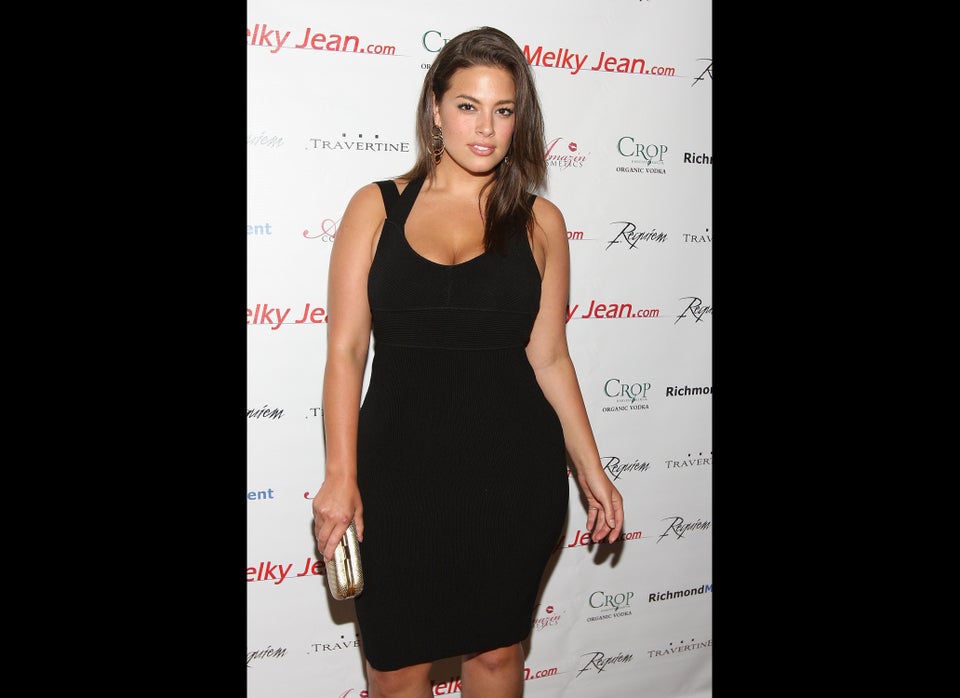There has been a palpable surge of energy in the modeling industry on the issue of body size, from the growing presence of plus-size models to increased talk about too-skinny, too-young catwalkers. But fashion photographer Nigel Barker is here to pop the positivity bubble, as it were, and get honest about the current industry standards: They're still very, very skinny.
Speaking candidly to Salon, Barker, best known as a judge on "America's Next Top Model," said that the "you can be a model, too!" message of "Top Model" is nice; but realistically, the physical standard for models today doesn't allow that (emphasis ours):
"But the business of fashion itself, as far as the models are concerned: There are more modeling agencies than ever before, and there are more people fascinated with becoming models than ever before. And for better or for worse. I think people have to be careful. Sometimes 'Top Model' makes people believe that anyone can be a model. And I love the idea of it -– I love the idea of equality and all the rest of it –- but obviously there are certain paradigms with the fashion business that are not so much to do with you having to be perfect, but it has more to do with much more pragmatic things. Designers simply can't afford to make dresses in 10 sizes for a sample. They really want to make one size that's a sample size, and for whatever reason, they decide it's gonna be a 4, or if it's a large size, it’s gonna be a 6. Quite often it's between a 2 and a 4, and it fits a girl who's around 5-foot-9, and that’s their look. That's what happens -– that's how the industry is controlled."
He added, "So it's often harder for full-figured models or petite models or very large, tall models to break into the business," even if there are some agencies that work with plus-size models. As it stands, designers are designing in denial: "They don't sell to women who are 5-foot-9 and size 4. That just is not realistic, and especially the show girls, who are 5-foot-11 and weigh 100 pounds. That's just not who the customer is."
But no matter who buys the clothing, designers must start with a sample. Barker hits on the sensitive subject of sample sizes, the physical manifestation of the oft-mentioned "body standard" in fashion. Designers must design starting with a standard sample, and the size of that sample is small -- hence the need for the models to maintain small figures.
Model Crystal Renn has argued that the sample size, currently a size 0 or 2, should be a size 8, which would give both the models and the designers more freedom. "If a really amazing model walked in who was a size 0, you would tailor the dress down to her," Renn said at a panel earlier this year. And the models, of course, could feel free to be as large as a size 8.
But according to Barker, increasing the sample size places a burden on designers that they're unlikely to embrace. Some argue that larger clothing is simply more difficult to make, while others would say they shouldn't have to "tailor a dress down" to fit different models, as Renn suggested.
But what others might point out is that it's a question of beauty, too. Like it or not, thinner is perceived as better in our current culture, to the point where children as young as four are displaying anti-fat prejudice and 40 percent of 10-year-old girls say they want to lose weight. When everyone is striving to be smaller, it's no wonder the industry standard remains small.
Head over to Salon.com to read more of Nigel Barker's take, and read Crystal Renn's thoughts on the matter here. Do you think the industry can realistically shift over to a larger sample size, or are size 0s and 2s here to stay?
Models who prove you can make it as a size 10 (or bigger):
Want more? Be sure to check out HuffPost Style on Twitter, Facebook, Tumblr, Pinterest and Instagram at @HuffPostStyle.
CORRECTION: A previous headline misquoted Barker. This has been updated.
